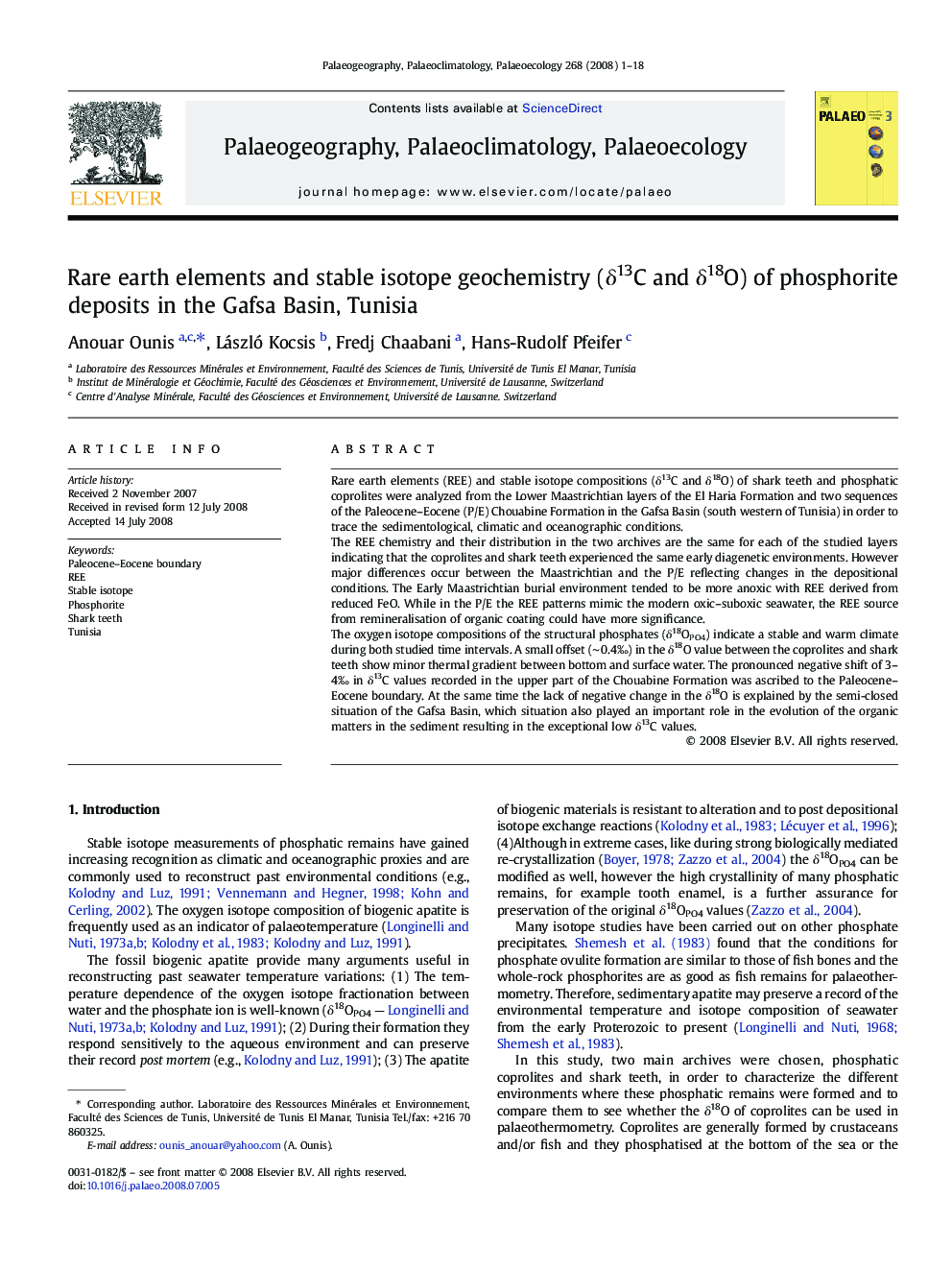| Article ID | Journal | Published Year | Pages | File Type |
|---|---|---|---|---|
| 4468409 | Palaeogeography, Palaeoclimatology, Palaeoecology | 2008 | 18 Pages |
Rare earth elements (REE) and stable isotope compositions (δ13C and δ18O) of shark teeth and phosphatic coprolites were analyzed from the Lower Maastrichtian layers of the El Haria Formation and two sequences of the Paleocene–Eocene (P/E) Chouabine Formation in the Gafsa Basin (south western of Tunisia) in order to trace the sedimentological, climatic and oceanographic conditions.The REE chemistry and their distribution in the two archives are the same for each of the studied layers indicating that the coprolites and shark teeth experienced the same early diagenetic environments. However major differences occur between the Maastrichtian and the P/E reflecting changes in the depositional conditions. The Early Maastrichtian burial environment tended to be more anoxic with REE derived from reduced FeO. While in the P/E the REE patterns mimic the modern oxic–suboxic seawater, the REE source from remineralisation of organic coating could have more significance.The oxygen isotope compositions of the structural phosphates (δ18OPO4) indicate a stable and warm climate during both studied time intervals. A small offset (∼ 0.4‰) in the δ18O value between the coprolites and shark teeth show minor thermal gradient between bottom and surface water. The pronounced negative shift of 3–4‰ in δ13C values recorded in the upper part of the Chouabine Formation was ascribed to the Paleocene–Eocene boundary. At the same time the lack of negative change in the δ18O is explained by the semi-closed situation of the Gafsa Basin, which situation also played an important role in the evolution of the organic matters in the sediment resulting in the exceptional low δ13C values.
